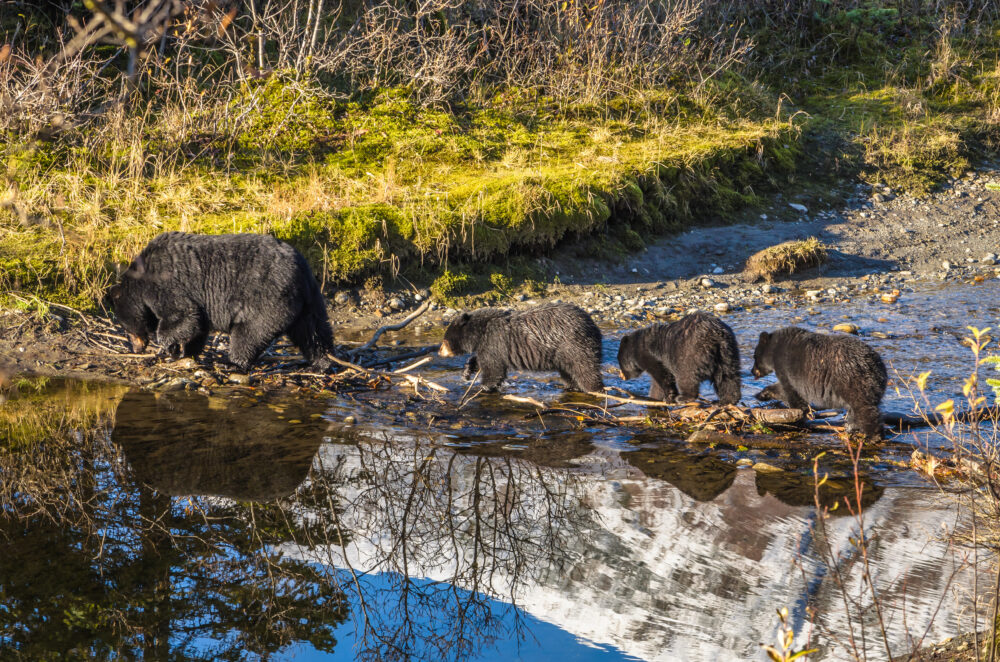We have much more to do and your continued support is needed now more than ever.
Connect the Dots
What American didn’t learn how to play "Connect the Dots" as a kid?
The game is simple: Look at all the numbered dots on the page and begin tracing lines between them, one, two, three, and so on. Pretty soon, an image emerges that wasn’t clear until you connected the dots. The last 12 months remind me of a game of connect the dots, and global warming is the image that appears more clearly than ever before.
Picture a big map of the United States. The first great big dot appeared one year ago right in the middle of New Orleans. Hurricane Katrina, at her strongest, was a Category 5 storm and even as she weakened upon coming ashore, she devastated a gigantic swath of the Gulf Coast, and nearly wiped out an entire city. Researchers tracking Katrina reported in September that record-high sea surface temperatures in the Gulf of Mexico were likely responsible for intensifying the storm.
A few more dots could be placed in the weeks following in places like Lake Charles, La., Biloxi, Miss., and Fort Lauderdale, Fla., thanks to Hurricanes Rita and Wilma. In all, 2005 was one of the worst years for natural disasters in the United States, causing an unprecedented $121 billion in damage, and more than 1,460 deaths.
Farther north, the winter of 2005-2006 brought us additional dots in places such as Cenaiko Lake in Coon Rapids, Minn., and Grafton Lake in upstate New York, where communities had to cancel annual ice fishing derbies because the lakes failed to freeze.
This summer, we’ve seen dots all over the West, from Texas to California to Wyoming, where wildfires fueled by hot, dry conditions have scorched millions of acres. According to new research released in July, the length of "wildfire season" in the West has increased by 64 percent since the 1970s, matching global warming models that projected earlier springs combined with hotter, drier summer conditions would contribute to longer fire seasons.
Let’s not forget the dots many of us could mark on our own sweltering neighborhoods this summer. According to the National Climatic Data Center, the average temperature for the continental United States from January through June 2006 was the warmest first half of any year since records began in 1895. It’s likely 2006 will be among the hottest years ever recorded, right up there with 2005 and several of the 1990s.
While no one hot year or severe weather event can be blamed on global warming, scientists tell us these events are indicative of what a changing climate will bring: more intense hurricanes, longer and more severe drought and wildfires, less snow and ice in winter, more heat waves. If this year is any example, global warming is no longer a problem of the future we can comfortably contemplate, promptly ignore and leave for the next generation to address. It is upon us now.
Nearly a year after Hurricane Katrina became one of the worst natural disasters in U.S. history, Americans are connecting the dots. A new Zogby poll shows that three-fourths of American voters are more convinced today that global warming is happening than they were two years ago, and nearly two-thirds believe global warming is contributing to more intense hurricanes like Katrina, this summer’s heat wave, more frequent drought and less snowfall in parts of the United States.
How many more Katrinas, Ritas or Wilmas does it take before our national leaders address global warming as an urgent threat to the people of this nation? We cannot afford to continue patching our coastlines with expensive Band-Aids. We must address the root cause of the problem and take the necessary measures to protect our country from disaster.
Americans deserve solutions. We deserve leadership. Our children and grandchildren deserve to inherit a healthy, thriving planet. We have an obligation to our generation and a moral responsibility to future generations to address global warming before it’s too late.




















